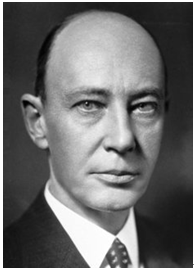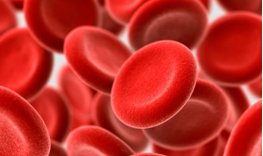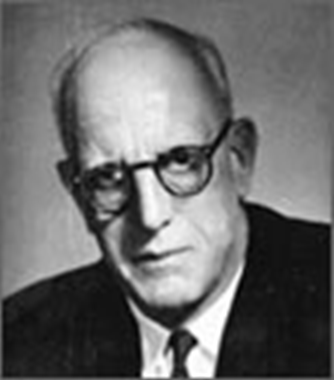The Forgotten Hero
A hundred years ago, anemia meant death.He changed it.
The 21st century is the best time for people with anemia. Fatigue? Weakness? Short of breath?Don't worry, if you ask your family doctor, he would tell you, all you have to do is eat some pork liver, or buy some vitamin B12. Each symptom will disappear in a few weeks.
A hundred years ago, the situation was completely different: anemia meant death .Until two doctors changed the war against anemia.
The first one is George Richards Minot.
George Richards Minot, nobelprize
Minot was born in Boston in 1885. As his family was full of famous doctors, he went to Harvard University to study medicine.
At that time, all doctors in the world tried to find a way to cure anemia.
Unlike cholera, which caused millions of death in the 19th-century, on the one hand, nobody found a certain reason for anemia, on the other hand, anemia affected almost everything. Every cell needs oxygen, and oxygen comes from red blood cells. Unfortunately, anemia means there are not enough red blood cells. In early stage, our body could reduce the blood supply to the skin, to make important organ such as heart and lung have enough oxygen.If the oxygen supply to the heart and lungs were also in short supply, death would be the only ending.
Red blood cells, The Franklin Institute
Some patients had lost too much blood in a short time, or have abnormal red blood cells. However, most patients looked exactly like a regular person, except that they were lack of gastric acid.
In 1926, Minot read an interesting paper. From the paper, he learnd, anemia may have related to malnutrition, and pork livers showed a certain effect on experimental animals. Minot immediately started his experiment—giving liver to his patients.
The results of his experiment supported that pok liver is the medical doctors look for. For this work, he was awarded, in 1934, the Nobel Prize for Physiology or Medicine.
But there is still a problem: not every healthy person loves pig liver, what keeps them away from anemia?
It is the second person we are going to talk about, William Bosworth Castle, who solved this problem.
William Bosworth Castle (Source: hematology)
William Bosworth Castle was born in 1897, in Cambridge, Massachusetts. His father, William Ernest Castle, the first person who used fruit flies to do genetic research, who is known as the "father of modern genetics", had hoped his son would focus on genetic. But William Bosworth Castle showed more interest in patients.
Castle loved machine、logic, and the spirit transported from generation to generation. At Harvard University, he found studing medicine was the only way to gain them all.
In 1927, Castle read Minot's research, and immediately, he realized that there was still one puzzle to solve.
“If normal people do not have to eat any liver to maintain normal blood counts, why could ingestion of liver in large quantity cure pernicious anemia?”
Castle turned his attention to gastric acid, which was never paid attention to. Most patients with anemia have a lack of gastric juice. He suspected that some components in the gastric acid were necessary for blood production .
The next question was how to prove it.
As a doctor, Castle knew that it took about two hours for food to leave the stomach. Which meant, if gastric acid played a role in blood production, two hours is all it has.
Castle came up with a genius plan:
He didn't eat anything in the morning, to make sure he have enough gastric acid. Then, he ate 300 grams of raw beef patties. An hour later, he induced regurgitation by pharyngeal stimulation. At last, he fed his vomitus, a mixture of gastric acid and raw beef patties, into the stomach of his patient.
Guess what happened?
His patient got better and became healthy soon .
It was not gastric acid or raw beef which cured people, but the mixture. According to his study, Castle determined that our body needs two factors to produce red blood cells. One in gastric acid he called gastric intrinsic factor, the other one was confirmed to be vitamin B12 later.
Vegetarianism has become more and more popular in recent years. It's OK to be a vegetarian, just remember meats and fishes contain more vitamin B12 than vegetables.
vitamin B12, Sohu
Since then, Castle kept study anemia and other blood diseases. He died peacefully in 1990, left everything he loved: family、career、laboratory、his Model A Ford made in 1932 .
What did he leave?
The cure for anemia, and the pursuit of knowledge."Let us never forget that Nature is the most original of all experimenters and that it is the patient's physician who is privileged to learn most directly from her sometimes cruel, but never meaningless, clinical presentations."

Chinse<<<
References:
1. The Nobel Prize in Physiology or Medicine 1934. NobelPrize.org. https://www.nobelprize.org/prizes/medicine/1934/minot/biographical/. Accessed July 26, 2019.
2. Conrad ME. Anemia. In: Walker HK, Hall WD, Hurst JW, eds. Clinical Methods: The History, Physical, and Laboratory Examinations. 3rd ed. Boston: Butterworths; 1990. http://www.ncbi.nlm.nih.gov/books/NBK254/. Accessed July 12, 2019.
3. Karlson P. W.B. Castle and the ‘intrinsic factor.’ Trends in Biochemical Sciences. 1979;4(12):N305. doi:10.1016/0968-0004(79)90303-7
4. Elrod JM, Karnad AB. William Bosworth Castle: Pioneer of Haematological Clinical Investigation. British Journal of Haematology. 2003;121(3):390-395. doi:10.1046/j.1365-2141.2003.04242.x
5. Sciences NA of. Biographical Memoirs: V.67.; 1969. doi:10.17226/4894
6. 葛均波, 徐永健. 内科学. 人民卫生出版社; 2013. https://book.douban.com/subject/25725669/. Accessed June 26, 2019.







